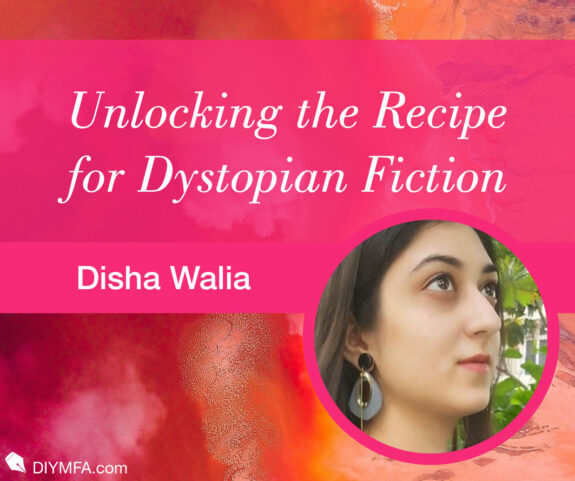Welcome, beautiful people on the internet! As promised in the last column of Worldly Wise, we are continuing to trace the footsteps of various subgenres in the realm of Speculative Fiction. And here is our first stop. Whether it is George Orwell’s “1984” or Suzanne Collins’ “The Hunger Games” trilogy, or even Margaret Atwood’s “The Handmaid’s Tale,” they all have something in common. These fall under one of the hottest subgenres of Speculative Fiction: Dystopian Narrative. Perhaps you’ve also found yourself daydreaming about writing about a world unlike our own. In case you want to find out if this is the subgenre for you, continue reading ahead, because we are going to discuss the key elements that you just cannot miss if you want to unravel the power of a dystopian world within the realm of Speculative Fiction.
But first things first, let’s figure out what this subgenre is all about.
What is Dystopian Fiction?
Dystopian fiction is a subgenre of speculative fiction that explores imagined worlds where society is characterized by oppression, suffering, and often a bleak or nightmarish future. These narratives are often used for cautionary tales, critiquing contemporary social, political, or technological trends. Some authors also use this as a tool for warning of the potential consequences if those trends continue unchecked. Sounds like something you might want to do with your work in progress? We’re off to a society that is set in the near future, dealing with something that is already a problem in our world today. If you think about one of your favourite dystopian fiction, you would probably be able to figure out how this might be unfolding in that tale.
If you want to give your work in progress a great structure and make sure your target audience instantly connects with the tale, it is often wise to include the key elements found in the other works like yours.
Why To Include Key Elements?
Readers come to a book with certain expectations. This is based on its genre and subgenre. Meeting these expectations can make their literary adventure more enjoyable and satisfying. As an author, it is your responsibility to deliver what you promised. So, if you are promising a dystopian land where water is a luxury, that is what they will be excited to read. You can only stretch so much trust your readers have put into you. It is also great to make sure your narrative effectively conveys the themes of the particular subgenre. In Dystopian Fiction’s case, these themes revolve around technology, individual freedom, and ethics.
If you want to make sure your readers instantly connect with the tale unfolding in your novel, it might be a good idea to include these key elements often seen in Dystopian Fiction.
Elements of Dystopian Fiction
An Oppressive Regime
Such worlds are often governed by authoritarian governments or powerhouses that exercise significant control over every aspect of citizens’ lives. How they might do it? Well, that is up to your imagination. It can range from state-of-art surveillance, propaganda, censorship, or simply brute force. All of this is done to maintain their power.
Lack of Hope
Dystopian stories tend to lean more towards a pessimistic nature. This is not to say that your characters should be insufferable, always cribbing about what is going around them. Rather it means that the characters are faced with insurmountable odds and limited hope for a better future.
Advanced Technology
Dystopian societies often possess advanced technology, what it is used for depends on how you want your story to unfold. Remember, technology can both empower and oppress in these settings. This can also have either nature taking the world back by force or a complete environment decay where resources are scarce.
A Rebellion
One of the most recognizable elements of Dystopian narratives is that it frequently involves characters or groups who resist the oppressive regime. They either often seek to overthrow it or simply survive within it. These resistance efforts are a central element of the story.
Continuing our journey into the realms of subgenres in speculative fiction, our sails shall be next set to navigate the territories of Utopian narratives. Do you think I missed any key elements of Dystopia narrative? Let me know in the comments!
Until next time!

Disha Walia is a lifelong storyteller and an enthusiastic writer and editor in love with the idea of exploring the creative world of words. While making her space in the world of non-fiction and fiction alike, Disha loves to spend even her free time daydreaming about what next to write. Connect with her on www.quillinary.com. You can also follow her on Instagram and Twitter.







